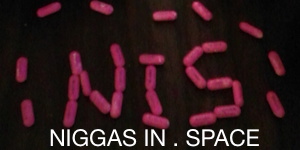Sorry, meant to get back to this earlier, kept getting distracted.
I did not hear about the UN report of Assad not having used chemical weapons. I'm curious as to what differences a batch of the same chemical can have?
Not sure to be honest, I suspect it's the same sort of tests they run for explosives tracing - levels of impurities tend to be consistent among chemicals that are manufactured at the same faciilities, and byproducts/unreacted precursors in the finished product can help to identify which synthesis path was used to make it - government labs will generally use more precise, higher-yield methods that clandestine manufacturers don't have access to etc.
I don't think its fair to blame "rebels" as we all know aren't just one group. Al-Nursa I'm reading had their supply tested and it turned out to be anti-freeze. Six of them were charged with trying to procure chemicals to create Sarin. Then there was the robbery of Syrian chemical weapon supply which they found owned by "opposition fighters" so who knows who that could be.
perhaps, but that's been a big sticking point in negotiations between the US and Russia (aside from the US not wanting to negotiate at all, really) - ISIS and ANF have long been designated terrorist groups, but ANF often change their name and claim to change their allegiances in order to present themselves as 'moderate'. Because of their strength on the ground and their intermingling with other rebel groups the US has long-resisted Russia and Syria's efforts to re-designate them as terrorists - conditions for the most recent ceasefire were for the US to enforce the 'disentanglement' of ANF fighters and other rebels so that they could be attacked without risking US assets (embedded special forces etc.), but the majority of rebel groups refused, reasoning that they fought for the same thing and ANF were one of the strongest forces fighting against the government.
As for the convoy, I did read they found OFAB fragmentation bombs which are currently only used by Syrian and Russian aircraft. Russian intelligence released drone footage of a militant truck driving next to the convoy. US says they saw russian aircraft on their radars. There are also claims that the OFAB bomb being there is unrelated. So idk.
​http://www.independent.co.uk/news/world/middle-east/aleppo-aid-convoy-attack-russian-bomb-remains-recovered-from-site-a7324841.html
I wasn't aware of that, and only read over the Bellingcat report briefly. Two things:
1. Bellingcat appears to largely be a propaganda mouthpiece masquarading as an independent research group. They will only use NATO-approved sources and appear to follow them without question, while attacking anything presented in opposition. They've (though it's largely just one guy) often been criticised by image analysis professionals and UN analysts for using unreliable methods and drawing conclusions not suggested by evidence, and have even been criticised by the developers who wrote the image analysis software they use. I'll track down more specific sources but
this article goes into the faulty methods they've attempted to pass off as fact. They even made the claim that having 'Photoshop' in the EXIF data of some of Russia's released satellite photos was proof they'd been altered, as opposed to just being cropped and resized for release.
2. In that specific report,
original/
followup, this image:

was the only thing that appeared to be part of a bomb or missile. Given the resolution and angle it's impossible to say definitively what it is - they were only able to get the close-up images of the part by asking partisan white-helmets to retrieve it.
Since the post was published the Bellingcat team has been in touch with the Syrian Civil Defence unit closest to the attacked site, who recovered and photographed two pieces of debris, including the object featured above.
Assuming the part did come from the location stated, it does not have any identifying markings and is not a shape unique to ordnance - it could've been part of some other machinery like a turbine or compressor or something.



 was the only thing that appeared to be part of a bomb or missile. Given the resolution and angle it's impossible to say definitively what it is - they were only able to get the close-up images of the part by asking partisan white-helmets to retrieve it.
was the only thing that appeared to be part of a bomb or missile. Given the resolution and angle it's impossible to say definitively what it is - they were only able to get the close-up images of the part by asking partisan white-helmets to retrieve it.